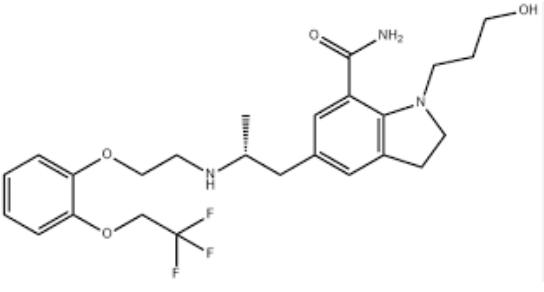Silodosin API, also known as silodosin hydrochloride, is a valuable active pharmaceutical ingredient (API) playing a critical role in managing benign prostatic hyperplasia (BPH). This condition, commonly affecting older men, is characterized by an enlarged prostate gland that can significantly impact urinary flow.
Understanding the Mechanism of Action
BPH arises due to the enlargement of the prostate gland, which surrounds the urethra and constricts its passage. This leads to various urinary symptoms, including:
- Difficulty starting urination
- Weak urinary stream
- Frequent urination
- Urgent need to urinate
- Nocturia (frequent urination at night)
Silodosin API addresses these concerns by selectively blocking alpha-1 adrenergic receptors. These receptors are located in the smooth muscles of the prostate gland and urethra. By blocking them, Silodosin relaxes the muscles, allowing for improved urine flow and alleviating BPH symptoms.
Clinical Benefits and Advantages
Silodosin API offers several advantages over other BPH treatments, including:
- High efficacy: Silodosin effectively relieves urinary symptoms associated with BPH, improving urinary flow and bladder emptying.
- Rapid onset of action: Patients typically experience improvement in symptoms within 1-2 weeks of starting Silodosin therapy.
- Favorable safety profile: Silodosin is generally well-tolerated with fewer side effects compared to other BPH medications.
- Selective action: Silodosin primarily targets alpha-1A receptors, minimizing the potential for side effects associated with blocking other alpha-1 receptor subtypes.
Industry Landscape and Future Outlook
The global Silodosin API market is expected to reach $1.3 billion by 2027, driven by the aging population and the increasing prevalence of BPH. Leading manufacturers of Silodosin API include:
- Zhejiang Hisun Pharmaceutical Co., Ltd.
- Sun Pharmaceutical Industries Ltd.
- Reddy's Laboratories Ltd.
- Cipla Ltd.
- Qingmu Pharmaceutical
Research efforts are focused on developing improved formulations of Silodosin API with extended release properties or combination therapies with other BPH medications. Additionally, exploring Silodosin's potential in treating other urological conditions is an area of ongoing investigation.
Conclusion
Silodosin API has emerged as a valuable tool in managing BPH, offering patients significant relief from urinary symptoms and improved quality of life. With its robust clinical benefits, favorable safety profile, and growing demand, Silodosin API is poised to play a crucial role in the future of BPH management.

